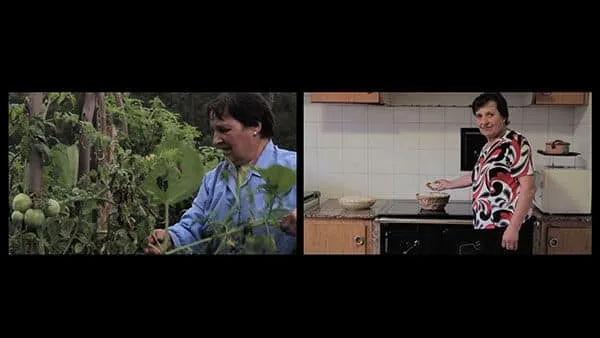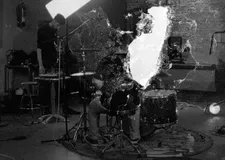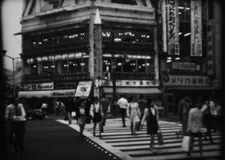 |
| Cruz Piñón |
This year alongside sections dedicated to Jørgen Leth and Aki Kaurismäki, and a range of parallel programmes and cultural events, the 40 films in the competitive programme - including 17 Spanish premieres - encompassed international titles already garlanded with critical recognition (for example, the animation section included World Of Tomorrow (Don Hertzfeldt, 2015) and Waves '98 (Ely Dagher, 2015)) and the latest works by directors such as Ben Russell, Mark Rappaport, and local Lois Patiño.
 |
| Volontè |
There were three common strands woven through the Galician films in the programme – the relationship between people and their environment, the idea of collaboration or creative exchange between components or contributors, and experimentation with film form. The most impressive aspect of the latter was that these are films where experimentation drives the content - things aren't done as affectation, but as an organic development of pursuing an idea through to creative fruition (an alliance of form and function or style and content that is rarer than it should be).
In Cruz Piñón (2015) - winner of the award from the regional professional association of writers (AGAG) - director Xisela Franco uses split screen to create a diptych of one woman in order to represent two sides of her everyday life. The two sets of visuals start and end on a shared image (a view of the landscape and a shot of Cruz Piñón's house respectively), but for the duration the left-hand side shows its subject going about the chores demanded by the rural environment (feeding animals, tending fields) and the right shows her at home presenting various creative activities that she enjoys. The use of split screen illustrates this divide in the woman's life while simultaneously the director unifies the two image sequences via the audio track – in which we hear Cruz Piñón discussing her desire to learn new things and to engage with the world – and the duplication in the opening and closing shots. All of the elements combined into a rounded cinematic portrait.
 |
| Hyohakusha, Aimless Wanderer |
The use of differing perspectives in a melange of collaborative cohesion was epitomised by Volontè (2015), a record of the experimental noise improvisation band’s reunion after one year of inactivity. In an example of the afore-mentioned alliance between form and content, the film is credited to seven directors (Marcos Flórez, Helena Girón, Rafa Mallo, Roberto Mallo, Miguel Prado, Lucas Vázquez de la Rubia, Lucía Vilela), each of whom - the credits reveal - have fulfilled a different role in the production – a co-operative style of filmmaking, in the spirit of the creative pursuits of those onscreen.
Visually, the seemingly casual nature of the framing and shot duration - with added inserts of the surrounding industrialised landscape - develops into its own kinetic rhythm where the style fits what we see (for example, the scratches in the 16mm film suit the abrasiveness of the sound created but the framing and editing also feel instinctive rather than pre-planned) and there is an overall cohesiveness, although each of the elements seem to be acting independently of one another. In this way the film itself reflects the nature of the improvisation that it captures, which if it is to be free - intertitles tell us - 'has to be an act of auto-determination'.
This alchemy of disparate elements melding into a creative whole could also be seen in the components chosen for Curtocircuíto's programme - short, innovative and experimental glimpses of burgeoning filmmakers, and a festival that is more than the sum of its parts.
Related features:





















